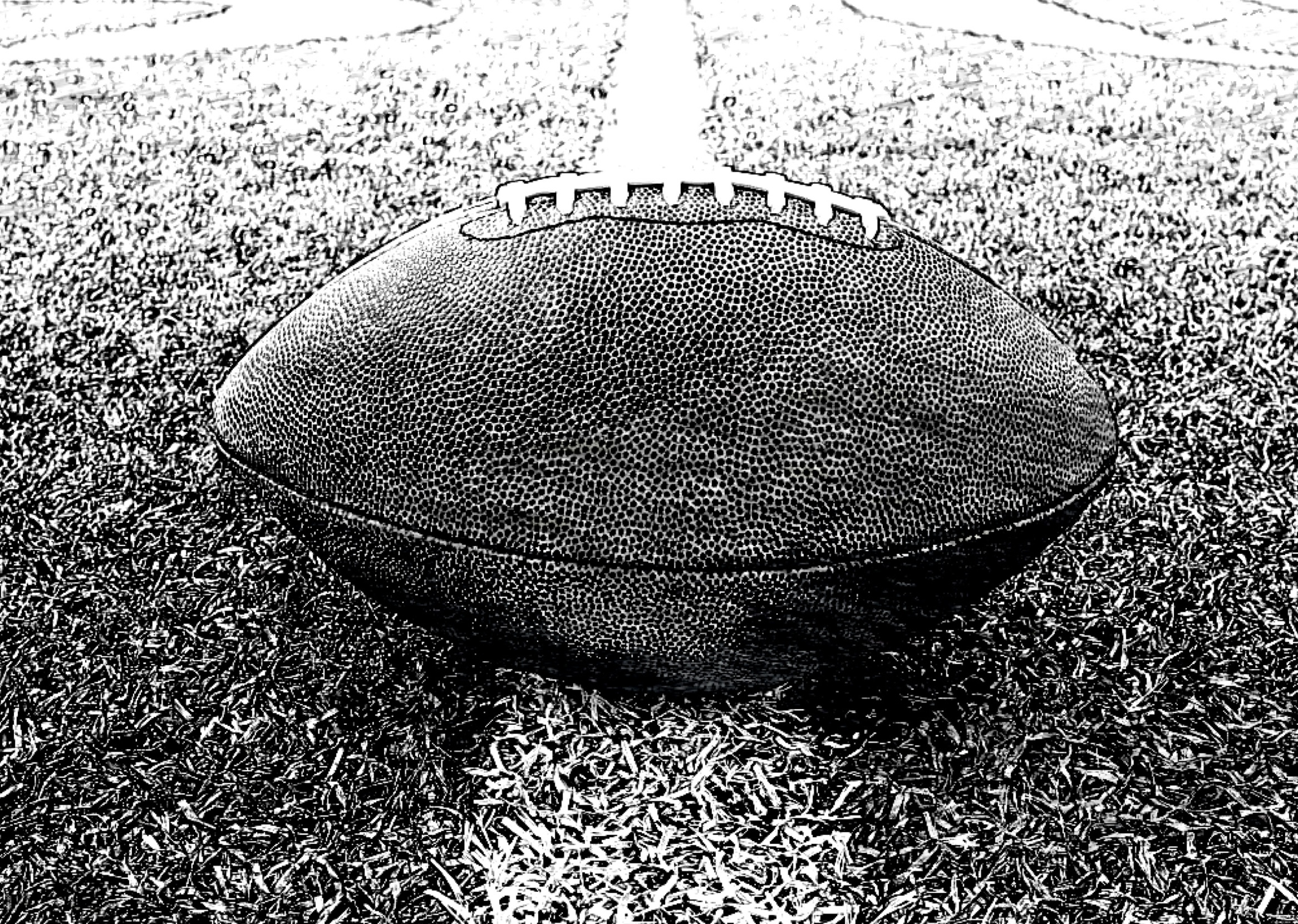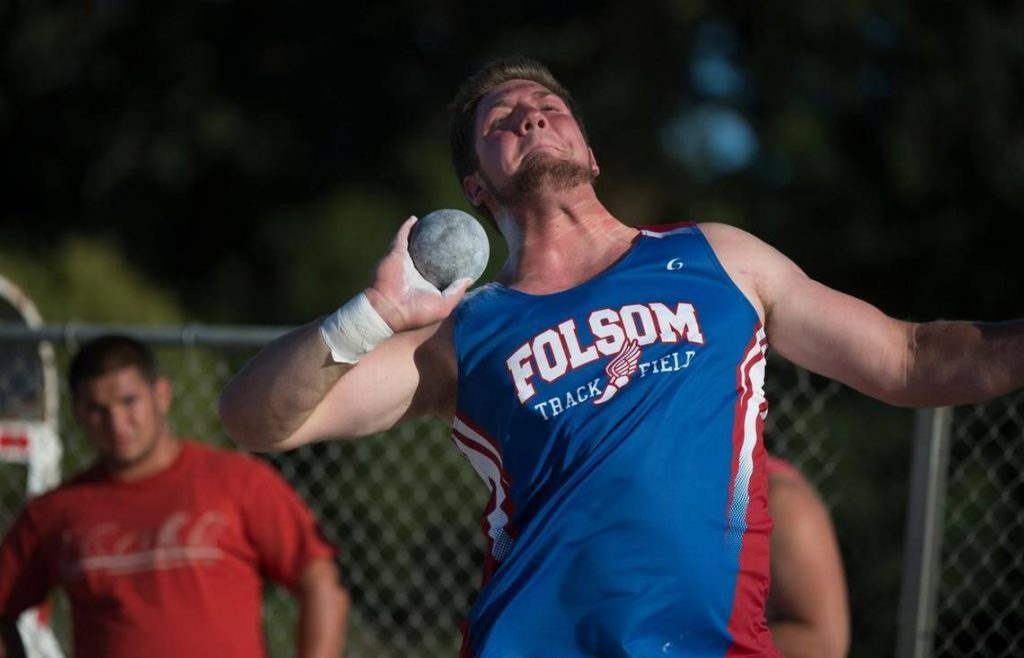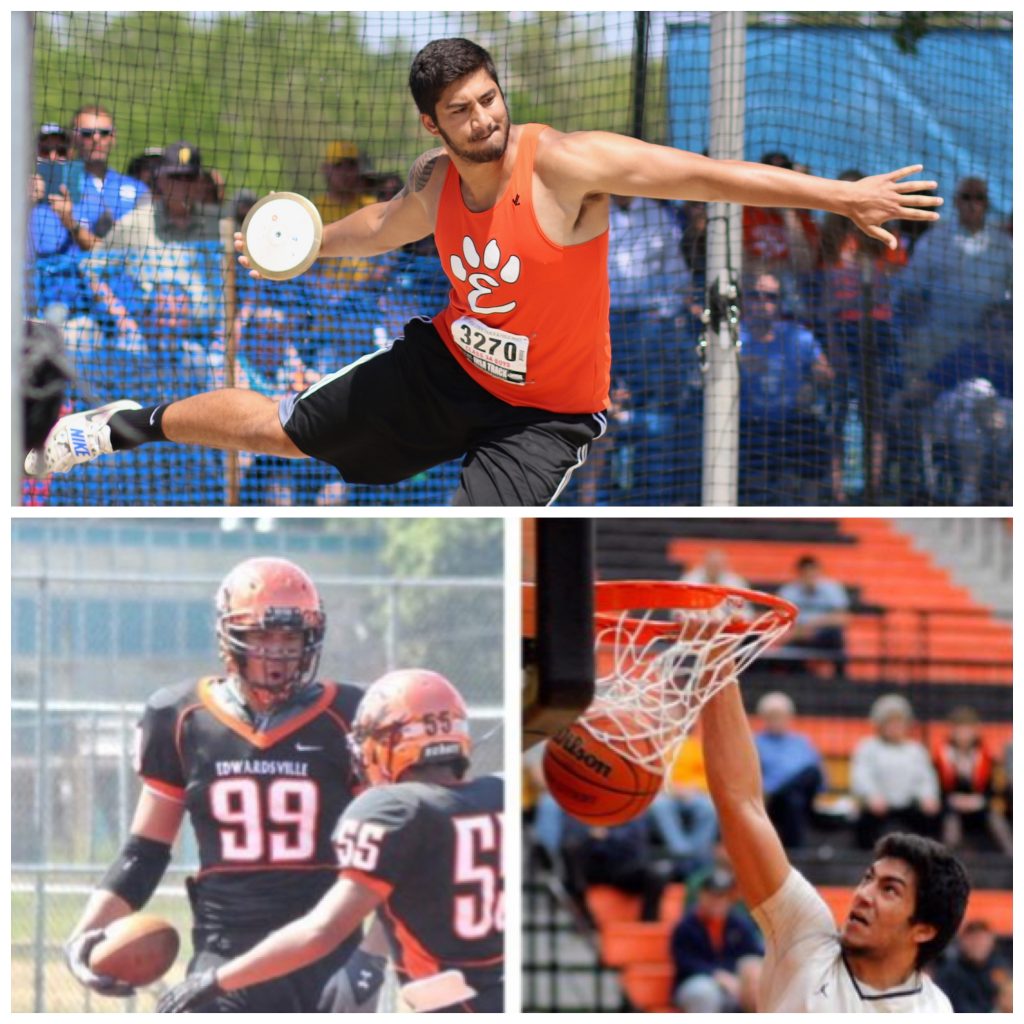 Big Cats (Not Hogs)
Big Cats (Not Hogs)
When the Redskins were really good in the early 80’s, they had a top flight offensive line. Their coach, Joe Bugel, nicknamed them the “Hogs”. Ever since then, many offensive line coaches have used “hogs” as a term of endearment. I don’t like it. I like *BIG CATS*.
*Feed the Cats* is an essentialist philosophy that is constantly searching to find ways to train smarter, not harder… to do less and achieve more. These ideas can be applied far beyond the boundaries of sprinting.
I believe football coaches would be better served by focusing on high performance instead of hard work, even when it comes to the “Bigs”.
Many high school coaches embrace *Feed the Cats*, but don’t see lineman as cats. “The bigs are different. The bigs have to be worked.” Football coaches see their football players as either cats or hogs. I disagree with that approach.
The best offensive linemen in the world are big, strong, and FAST.
Let’s look at the six offensive linemen taken in the first round of the 2019 NFL Draft.
♦ #11, Bengals, Jonah Williams, Alabama, 6’4″ 302, forty time = 5.12
♦ #14, Falcons, Chris Lindstrom, Boston College, 6’4″ 308, forty time = 4.91
♦ #18, Vikings, Garrett Bradbury, NC State, 6’5″ 306, forty time = 4.92
♦ #22, Eagles, Andre Dillard, Washington State, 6’5″ 315, forty time = 4.96
♦ #23, Texans, Tytus Howard, Alabama State, 6’5″ 322, forty time = 5.05
♦ #31, Falcons, Kaleb McGary, Washington, 6’7″ 317, forty time = 5.05
Five of the six first round picks had forty times ranked in the top seven of all the offensive linemen in the NFL Combine. Six of the fastest eleven offensive linemen at the NFL Combine were drafted in the first round. This needs to be shouted from the rooftops. If you were an offensive lineman at the combine and your speed ranked 12th through 59th, you were not a first-rounder. The first round picks were big, strong, and FAST.
Out of the 59 offensive linemen, here’s the forty yard dash rankings of the six first-rounders.
Lindstrom #2
Bradbury #3
Dillard #4
Howard #6
McGary #7
Williams #11
The slow first-round guy, Jonah Williams made up for his 5.12 with explosive strength. Wow, what did he bench? What did he squat? What did he clean? Stop it! Weight room numbers are NOT key performance indicators. Jonah Williams threw the shot put 60’10.25″ at Folsom High School (California). The 60-foot shot put by Jonah Williams was recorded in his junior season (graduated early).
Three of the six guys listed above played basketball in high school. Over the past three years, 11 of the 14 offensive linemen picked in the first round were multi-sport athletes in high school. (For more stats like this, visit trackingfootball.com, Mark Branstad and his buddies are revolutionizing college recruiting!)
What are the takeaways?
Offensive linemen are tall (and must have long arms). The average height of the six first round picks, 6’5″. All six were within two inches of that height. No outliers.
Offensive linemen are big. The average weight of the six 2019 first round picks, 312 pounds. All six were within ten pounds of that number. No outliers.
Offensive linemen are fast. The average forty time of the six 2019 first round picks, 5.02. All six were within 0.10 of that number. No outliers.
Nate Herbig
What happens to the outliers? What happens to offensive linemen who were all-star players but not 6’5″, 312 pounds, and running 5.02 in the forty?
Nate Herbig played at offensive guard for Stanford where he’d been chosen first-team All-Pac-12. By all accounts, Herbig was one of the best offensive linemen in the country. He left Stanford early for the NFL.
Herbig’s big three numbers at the NFL Combine? 6’3″ (too short), 335 (too fat), 5.41 (too slow). What happens to linemen who are too short, too fat, and too slow? They don’t get drafted. Period.
5.41 earned Nate Herbig the dubious distinction of being the slowest prospect at the NFL Combine. Herbig was the slowest of 260 athletes including quarterbacks. Even the legendary slow poke, Tom Brady, was faster 19 years ago when he ran a 5.28. On a positive note, Herbig was faster than ESPN analyst Rich Eisen (6.00).
Out of 103 underclassmen who entered the draft, 30 went undrafted. Nate Herbig is presently an undrafted free agent with the Philadelphia Eagles. A teammate calls Nate Herbig “the quickest 300 pound lineman I’ve ever seen”, but quickness won’t get you drafted. You must be FAST.
On a side note, I am pulling for Nate Herbig to make it in the NFL.
Why is Speed a KPI?
The speed factor for offensive linemen is, for some, counterintuitive. Offensive linemen don’t do much sprinting in a football game. Typically, their job is get wide, take a couple steps backward, and protect the quarterback. On rushing plays, linemen don’t take more than a few steps. Most linemen will never get close to top speed in a game, ever. Then what makes the forty time so important? The answer is obvious to me as a sprint coach. Speed has global effects. Faster athletes are better at almost everything. The NFL has found that the forty is a KPI (Key Performance Indicator). Fast offensive linemen have better and longer careers than slow offensive linemen.
What does this mean for a high school coach?
It seems obvious to me. Get your offensive linemen big, strong, and FAST. Period. Anything that interferes with those priorities is counter-productive. And, if you accept big, strong, and SLOW, you are cheating the kid. Speed must be trained two or three times a week year-round. Even during the season. Part two of this three part series will focus on *speed as a priority*.
Teach Healthy Living
The typical high school offensive lineman is fat. Fat kids are slow. We want big cats, not fat cats.
Why don’t coaches teach healthy eating? Over-eating is not funny. Coaches joke around with fat kids too much. I’ve seen offensive line coaches reward their kids with one-pound hamburgers or “all the wings you can eat”. Coaching football is an opportunity to educate kids. Shouldn’t football be part of life-long fitness?
Sleep deprivation is an epidemic with teenagers.
Here’s a fact that many coaches need to relay to fat kids:
“If you don’t get enough sleep, you are going to end up fat, sick, and stupid.” – John Ratey and Richard Manning from Go Wild: Free Your Body and Mind from the Afflictions of Civilization.
Maybe if you teach fat kids how to live healthy lives, you won’t have to torture them at the end of practice. Part three of this three part series will focus on *conditioning*.
Encourage Multi-Sport Participation
I block people on Twitter who argue that specialization gives kids a better chance to make it to the “next level”. Private trainers everywhere preach “next level” bullshit.
I troll the head FB coach at a high school in the south suburbs because I have proof that the guy encourages kids to spend their spring in the weight room instead of joining the track team. Here are three of his talking points…
♦ “Track doesn’t make you faster.”
♦ “Track speed is different than football speed.”
♦ “The biggest reason for not seeing playing time is strength, not speed.”
True educators encourage multi-sport participation. Sport participation is educational. It’s not a “next level” thing.
But… What if multi-sport participation truly was, ironically, a “next level” thing? In the last three drafts, 11 of the 14 offensive linemen picked in the first round were multi-sport athletes. Coaches discouraging a second sport might be wrong. Maybe big strong basketball players also make big strong offensive linemen. Maybe hiding out in a weight room nine months a year is NOT the best path to the bigtime. Maybe throwing the shot 60’10.25″ didn’t hurt the career of Jonas Williams.
 Jonah Williams, 60’10.25″ … I wonder what he would have done if he’d stayed his senior season?
Jonah Williams, 60’10.25″ … I wonder what he would have done if he’d stayed his senior season?
Love this quote from my friend, Ryan Grubbs (S&C, Purdue Football), “We train our linemen like throwers and our skill guys like sprinters.” Brilliant!
On a related note…
Here’s a coaching tip for high school football coaches. Recruit basketball players to your football program in late July or early August. Summer basketball is over. Summer football is over. (FYI, Basketball players don’t think summer football looks like much fun). Basketball players are terrific athletes and will make an immediate impact on your football team. There are NFL players who played college basketball, not college football. Great athletes are great athletes.
Why do offensive linemen have to be so athletic? They have to block big cats. Offensive tackles like Titus Howard (6’5, 322) have to block defensive ends like AJ Epenesa (6’6″ 280). Epenesa was a three sport star at Edwardsville HS (IL). He now plays for Iowa and expects to leave after his junior year for the NFL. Draft expert Sayre Bedinger believes Epenesa to be a better prospect than Nick Bosa, picked #2 in the first round by the Niners this year.
Epenesa (below) spent his high school days in athletic competition. When you are a football, basketball, and track star, you don’t spend much time in the weight room. Great defensive linemen are elite athletes. Great offensive lineman must match the athleticism of their opponents. It’s mano a mano.

Great athletes are great athletes and come in all sizes.
Offensive linemen are big cats. Don’t treat them like hogs.
This is the first of a three-part football series. The next two will ruffle some feathers.
Links to the 2019 Football Trilogy
♦ Football Coaches: Too Many Priorities
♦ Football Coaches: Stop Doing Mindless Conditioning
Tony Holler
@pntrack
630-849-8294
tony.holler@yahoo.com
Feed the Cats:
♦ The Boulder Tapes
(4.5 hours of content produced by Jay Johnson)
♦ Feed the Cats
(75 minutes with live demos, best seller for CoachTube)
♦ Origin and Philosophical Basis of Feed the Cats
The Football Articles:
♦ New Ideas for Old School Football Coaches
♦ Football Dosage and Approach ⇒ FAQ
♦ Football: Differentiating Sprint Practice and Non-Sprint Practice
♦ A Football Coach’s Guide to Feeding the Cats
Record-Breaking Football Podcast
TFC Sponsors

How do you feel about olympic style weightlifting’s overall transfer-ability to other sports? Not the slow, high rep lifting that most football programs do but rather fast cleans and snatches done for one or two reps. Do you think dedicating time to practicing these movements is worthwhile and make for overall better athletes or is it too much effort for too little reward? I always thought olympic lifters had a very high level of athletic skill and speed compared to other athletes.
I’m conflicted by cleans and snatches. Guys that do them well are typically excellent football players. High school kids need to learn them for the “next level”. However, olympic lifts are almost a sport to itself. The bang for the buck, time wise, is questionable. Like I said, I’m conflicted.
Thanks for your reply.
I feel the same way. Being able to do a full snatch/full clean takes a great deal of speed and coordination that I can see as beneficial to general athletic ability. It seems to me that olympic lifts are best suited for improving short sprint distances (10 yds, 20 yds, 40 yds) but aren’t as relevant for max velocity at 30m-60m. But then again I think nothing in other sports besides sprinting itself truly emulates running max velocity either. Olympic lifting is definitely just as much of its own sport as track and football. I know you are a big advocate for sprinters/football players playing multiple sports. So I guess the question then becomes, is Olympic weightlifting as a sport better for cross training with track/football than say basketball or baseball?
It might be, but playing basketball is educational… so I would opt for a true, competitive sport.
Hmm. In what ways would you say basketball is educational whereas olympic style weightlifting is not? In terms of playing football, basketball is a team sport as well so I can see how you would learn teamwork and team coordination from playing it over choosing an individual sport to practice. But for sprinting I’m not sure which skill set would be better to have. True, weightlifting is not offered as a high school sport that is a part of the high school but there are competitions for weightlifting (although not very popular in the U.S.) so I wouldn’t say it’s not a true competitive sport.
Yeah. I’m just speaking as a teacher and coach of 38 years. I’ve never thought of weight lifting as a sport from the high school perspective. Basketball seems like a more traditional sport from my point of view. I wasn’t trying to denigrate the weight lifting. Seems I’m often tamping down the idea that the weight room is the “be all and end all”. I’m not saying weight lifting is irrelevant.
Yeah understandable. A high school weightlifting strength and conditioning coach isn’t going to teach weight lifting like a true Olympic style weightlifting coach who coaches athletes who actually compete in the sport anyway. They are most likely not using the same amount of reps on each set, total sets, time between each set, etc. Most of high school weightlifting from what I’ve seen is just bodybuilding exercises with power cleans and squats which I agree is very overrated in terms of building actual functional athletic ability.
I also agree that even Olympic style weightlifting might be overrated in terms of how much transfer it would have to sprinting. I’m just not sure where compared to other sports I would rank it in terms of carryover.
Love this. A thought occurred while reading: train your guys for speed and you’ll be training them for enthusiasm. Enthusiasm and energy drain out through the floorboards when you’re over-trained (I know). Speed is of relative. Train the slowest guy on your team for speed and watch his attitude soar. Speed lifts the team.
“Train your guys for speed and you’ll be training them for enthusiasm. ~ George Beinhorn
I’m going to tweet this!